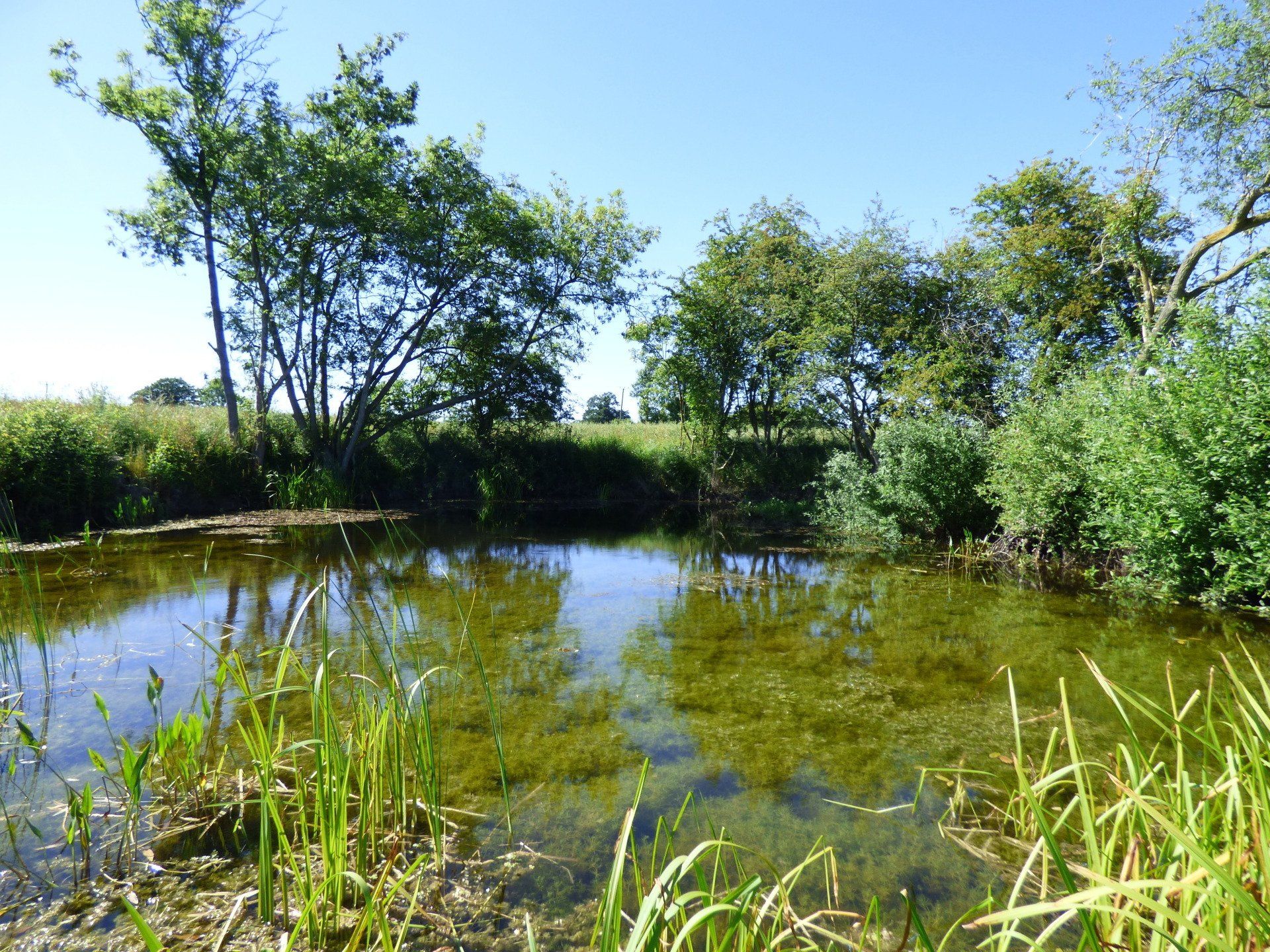Wetlands - The Farming and Wildlife Advisory Group for Norfolk - Pond Restoration
Norfolk FWAG is working with farmers, landowners & partners to reverse the decline of Norfolk’s ponds, especially on farmland.
Over the last five years they have secured funding to restore over 300 farmland ponds.
Representative Henry Walker tell WildEast that he is thrilled with the project's success so far, but says there is still plenty of work to do.

Norfolk Farming & Wildlife Advisory Group (FWAG) is a local charity run by farmers for farmers, providing independent conservation advice to landowners across the County. We are part of the national FWAG Association that operates across most of the UK, including all neighbouring Eastern counties. As a key partner in the Norfolk Ponds Project, Norfolk FWAG is working with farmers, landowners & partners to reverse the decline of Norfolk’s ponds, especially on farmland. Over the last 5 years Norfolk FWAG has secured funding to restore over 300 farmland ponds through Countryside Stewardship.
Norfolk & Suffolk FWAG have been providing advice on how best to restore & manage their ponds since the 1980’s, when the first Norfolk & Suffolk Ponds Projects were initiated with the local County Councils, English Nature and local Wildlife Trusts. The projects are reliant on the enthusiasm and willingness of local landowners and communities to return ponds to their former glory. It was one such Norfolk farmer,
Richard Waddingham who inspired the present incarnation of the Norfolk Ponds Project, with Professor Carl Sayer of UCL.

Importance of Norfolk Ponds
Norfolk holds more ponds than any other English county with an estimated 23,000 present. Most are in farmland, and have their origins as clay pits and livestock-watering ponds dug in the 17th to 19th centuries. Recent research by the University College London Pond Restoration Research Group, shows that ponds in farmland can provide vital clean freshwater habitats for aquatic plants and insects, amphibians, fish, and even water voles. Remarkably, it has also been shown that farmland ponds also support our declining farmland birds and bats as well as pollinators, which is a benefit to farmers.
Pond deterioration and restoration
Many thousands of ponds and small wetlands have been lost from the farmed landscape over the last 70 years. Some ponds have been filled in and others have become overgrown with trees and scrub. Restoration of overgrown ponds generally includes scrub clearance using a chainsaw or tree shears, and de-silting using a digger. Ponds lost to deliberate in-filling can be re-excavated.
There are lots of seeds from plants that used to live in the ponds still present in the mud, that can survive for hundreds of years. The seeds germinate when they are disturbed and receive light, so wetland plants can quickly recolonise, including very rare species lost from the countryside centuries ago. The ponds are surveyed for their plants before and after restoration by the Norfolk Ponds Project team.

The transformation of ponds after restoration is usually very quick, bringing stunning colour and diversity to the landscape within less than two years. There is a simple message to farmers and conservationists here – there may be no single better thing you can do for wildlife in farmland than to restore and conserve ponds.
Caution
It is important to seek expert guidance prior to embarking upon any pond restoration works. Consultation with the county archaeologist is essential, consents, felling licences and planning permission may be required. Always use trained machinery operators to do pond restoration work, generally in late summer and autumn when wildlife has finished breeding and the ground is dry, although work can take place through the winter until early spring in some circumstances. It is essential to retain the original slope and shape of ponds, for each pond is unique, and clues to its origin and former use may lie in its profile. It is also best to make use of the dormant seedbank present at the bottom of the pond, to allow a natural recolonisation, rather than planting or using a pond liner. The presence of invasive species needs to be checked before any work takes place.
There is a wealth of good information on ponds online. The freshwater habitats website has some of the best guidance. The general principles of pond restoration are to allow light in from the south, by coppicing any shrubs, and trimming overshading trees, outside of the bird nesting period, on a regular 5-year rotation. Secondly, to desilt ponds, exposing the parent material, beneath the accumulated leaf litter and anaerobic, black sludge.

We always recommend leaving 25-30% of a pond undisturbed, to act as a refuge for all those aquatic organisms’ resident year-round. Leaving areas of shelter and refuge for wildlife in the form of brash and wood piles are beneficial to invertebrates and amphibians particularly, both in and around the pond.
If you have ponds you’d like to be considered for restoration, the Norfolk Ponds Project has an online expression of interest form which will log your enquiry and direct you to the most appropriate partner organisation to provide advice and make you aware of what funding might be available.
WildEast Blog

Powered by LocaliQ
Follow Us
SIGN UP FOR NEWS & UPDATES
Newsletter Sign Up
Thank you for signing up to our newsletter.
Please try again later.
Privacy / Terms & Conditions / Sitemap
